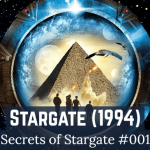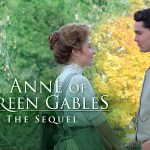𝙏𝙝𝙚 𝙒𝙞𝙯𝙖𝙧𝙙 𝙤𝙛 𝙊𝙯 (𝟭𝟵𝟯𝟵)

The Wizard of Oz | 75th Anniversary “I’ll Get You My Pretty”
The Wizard of Oz (1939) is one of the most beloved and enduring films in American cinema history. Directed by Victor Fleming and based on the 1900 novel The Wonderful Wizard of Oz by L. Frank Baum, this magical fantasy film has captured the imaginations of generations. Known for its vibrant Technicolor visuals, memorable songs, and timeless themes, The Wizard of Oz has become a cultural touchstone, celebrated for its enchanting world and the adventures of its unforgettable characters.

The plot follows Dorothy Gale (Judy Garland), a young girl from Kansas who is swept away by a tornado to the magical land of Oz. She embarks on a journey to see the Wizard, hoping he can help her return home. Along the way, she befriends three companions: the Scarecrow (Ray Bolger), who desires a brain; the Tin Man (Jack Haley), who longs for a heart; and the Cowardly Lion (Bert Lahr), who seeks courage. Together, they face challenges and learn valuable lessons, realizing that what they were seeking was already within them. The iconic line, “There’s no place like home,” underscores the central message of the film—that self-discovery and home are the most important aspects of life.
One of the film’s most notable achievements is its innovative use of Technicolor, which helped create a visually stunning and fantastical world. The vibrant colors of Oz contrast with the gray, sepia-toned Kansas, emphasizing the transition from the mundane world to one filled with wonder and magic. The use of color enhances the story’s fantastical nature, making Oz feel like a place of limitless possibilities. The color palette of Oz, from the Emerald City to the yellow brick road, has become synonymous with fantasy and wonder.

The film’s musical numbers are another defining aspect, with songs like “Over the Rainbow,” “Follow the Yellow Brick Road,” and “If I Only Had a Brain” becoming iconic in their own right. “Over the Rainbow,” in particular, has endured as one of the most beloved and recognizable songs in film history, perfectly capturing Dorothy’s yearning for something more than her ordinary life. The music is integral to the film’s narrative, helping to establish its themes of hope, courage, and friendship, while also contributing to its lasting appeal.











